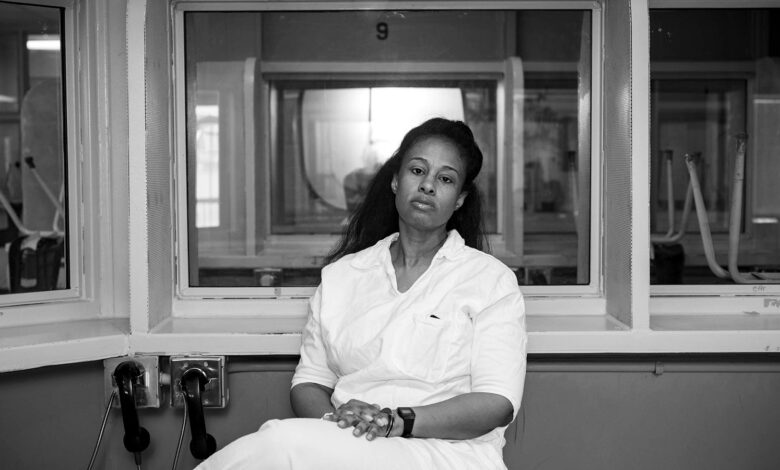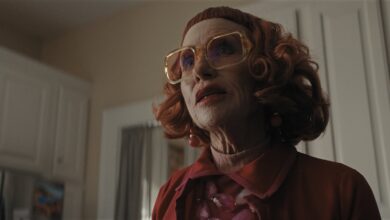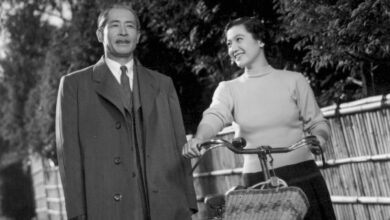
This article appeared in the July 3, 2025 edition of The Film Comment Letter, our free weekly newsletter featuring original film criticism and writing. Sign up for the Letter here.

Kwaneta Harris. Photo courtesy of Ariana Gomez.
Every morning at 4 a.m., when the prison is still cloaked in darkness and silence, I wake up to work on my screenplay. The fluorescent lights buzz overhead, harsh and unforgiving, as I carefully remove my precious collection of screenwriting books from under my thin mattress, where I keep them safe from occasional shakedowns by guards.
Syd Field’s Screenplay: The Foundations of Screenwriting and The Screenwriter’s Workbook, along with Blake Snyder’s Save the Cat, have become my personal bibles in this concrete wilderness where creativity struggles to survive. The dog-eared pages of these books represent my escape, my rebellion, and my determination to tell stories that matter, especially when the system expects me to remain voiceless.
For nearly 18 years, I’ve called a prison in Texas “home,” with eight and a half of those years spent in the suffocating isolation of solitary confinement without a television. My incarceration began just as the first iPhone was being introduced to the world, a coincidence that symbolizes the technological chasm between my reality and yours. The last phone I ever used was a basic camera phone, and the last movie I watched in a cinema was The 40-Year-Old Virgin (2005). While society has evolved through multiple technological revolutions, I’ve been frozen in time, left to wonder what a world dominated by social media, streaming services, and constant connectivity even looks like.
Despite this disconnection—or perhaps because of it—my imagination has flourished. Though my circumstances might seem insurmountable to most aspiring screenwriters, I refuse to let walls and metal bars dictate the boundaries of my creativity. My fascination with screenwriting springs from my childhood, surrounded by great-grandparents who couldn’t read but wielded the power of oral storytelling like master craftsmen. These elders passed down narratives the way most people of color have preserved their histories—through voice, rhythm, and the sacred act of remembering. As an only child blessed with an overactive imagination, stories became my sanctuary, my means of constructing safe spaces in my mind when my physical environment offered none.
This came in handy during those eight years in solitary confinement. Deprived of television or entertainment, I created elaborate shows in my mind. This internal cinema became my survival mechanism, teaching me that storytelling isn’t just entertainment; it is also resistance. These experiences laid the foundation for my current screenplay, a coming-of-age drama that follows three teenage girls navigating the complexities of growing up in an environment where childhood ends abruptly and survival becomes an art form.
When non-incarcerated screenwriters struggle with jargon like “loglines” or “beat sheets,” they can simply Google the terminology or join a writers’ group for clarification. I have no search engine at my fingertips. What is a “colorist”? It was news to me to learn that it ain’t got nothing to do with Clairol hair dye! Instead, it’s a professional who enhances the visual aesthetic of films through color correction and grading, something I discovered on page 237 of an outdated film-production handbook that was donated to my facility by the Books to Prisoners program.
Inside these walls, even the most basic screenwriting tools are luxuries that most take for granted. In Texas, prison libraries have joined the call to ban anything having to do with critical race theory, diversity, equity, inclusion, and explicit sex. There are no personal televisions to purchase for anyone incarcerated. No way to get online or reach a computer. All I have is a $375 clear typewriter. I’m writing this article on it, as if I’m in the print era of Encyclopedia Britannica.
“INT. PRISON CELL – DAY” might be the only slugline I can write from direct experience, while other writers casually craft scenes set in exotic locations they’ve actually visited. When screenwriters talk about their “coverage” getting positive feedback, they’re referring to professional script analysis—not the bedsheet I use to shield my writing from prying eyes. The “three-act structure” that Field champions becomes a metaphorical lifeline in a place structured entirely by someone else’s rules, while understanding the concept of “white space” on the page feels paradoxical when all my actual physical spaces are white.
Amid the blaring announcements over the PA system and the constant cacophony of 2,000 women navigating confined spaces, finding focus requires a discipline few civilian writers will ever need to develop. Most aspiring screenwriters might complain about the perils of procrastination or writer’s block when faced with the distractions of social media or streaming services. They have no concept of trying to maintain a creative flow when a cell extraction is happening a few doors away, or when your “writing session” is interrupted by the mandatory prisoner count six times a day. Yet these restraints have forged in me an ironclad concentration that I suspect would make even the most disciplined Hollywood writer envious. Necessity became the mother of my creative invention.
Among the greatest challenges I face is the near-impossible task of staying culturally relevant while being culturally isolated. When Syd Field discusses using “popular films as reference points,” I’m confronted by the fact that my cultural knowledge stopped evolving in 2007. I rely on my shabby copy of the screenplay of The Shawshank Redemption (1994) not just as a template for formatting, but also as a record of one of the few films I can actually reference from memory. My “research” consists of whatever books make it through the strict prison-mail system, while other writers casually stream movies for inspiration or attend film festivals.
The knowledge gap is not merely inconvenient; it’s a chasm that threatens to make my work outdated before it’s even completed. Haunting my writing journey is the persistent voice of imposter syndrome, whispering that I, an incarcerated Black woman teaching herself a complex craft without guidance, got no business dreaming of screenwriting success. How can I possibly compete with film-school graduates and industry insiders when I don’t even know what I don’t know?
This fear is amplified by my awareness of how stories dealing with women like me have historically been told not by us but about us, through lenses distorted by clichés and presumptions. The “character arc” of the incarcerated woman in mainstream media rarely extends beyond cautionary tale or victimhood narrative, lacking the nuance and humanity that only lived experience can provide. The “subtext” of these misrepresentations, to borrow another screenwriting term, reinforces harmful stereotypes and perpetuates systems of oppression.
When others tell our stories, they often focus on what Blake Snyder calls the “dark night of the soul” moment, without understanding the daily resilience and humanity that exist even in our darkest circumstances. Despite the extreme obstacles of writing by hand (and then pecking it out on a typewriter) without access to screenwriting software, navigating complex formatting rules without examples, developing cultural references without experiencing culture, and creating without feedback—I persist. The power of storytelling rests upon its ability to motivate change through empathy. If we truly want to transform how marginalized people in cages are portrayed, incarcerated folks must be at the forefront, amplifying their own experiences—especially now, when we are all living in a government-sanctioned and hyperpolarized environment of “us versus them.”
The “denouement” of my personal narrative isn’t reaching “FADE OUT” on a perfect script. It’s knowing that with each word I write, each scene I craft, I am reclaiming the power to define my own story and I’m potentially reshaping the narrative for countless others whose voices have been silenced. So I will figure this out, one scene, one beat, one page at a time, because in a world that conspires to make me invisible, my screenplay is my declaration that I still exist, I still matter, and I still have something vital to say.
Publication of this essay was facilitated by Emily Nonko and Empowerment Avenue.
Kwaneta Harris is a former nurse, business owner, and expat, now an incarcerated journalist, from Detroit. Her writings have appeared in a wide range of publications including This American Life, Rolling Stone, and Teen Vogue. She writes on Substack at “Write or Die” and is working on a book about the teenagers from juvenile detention who were her neighbors in adult solitary confinement.
Source link




